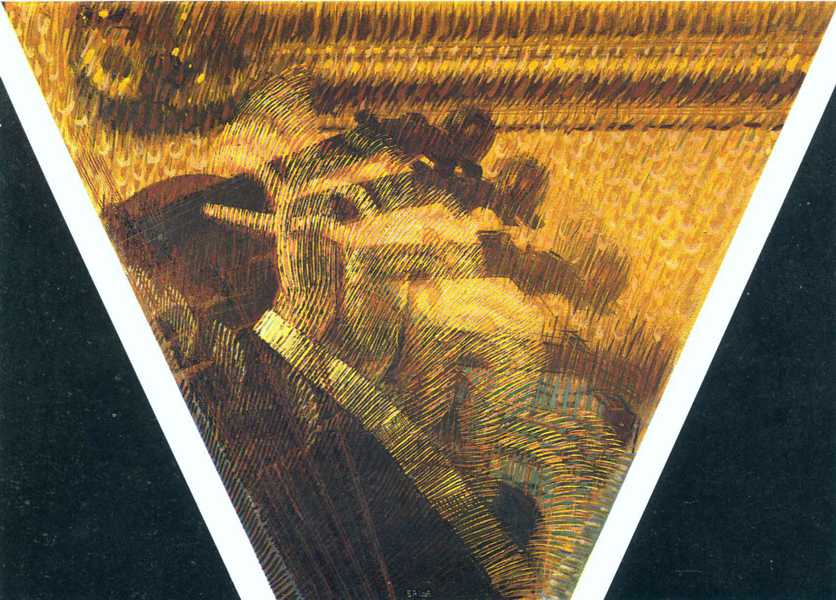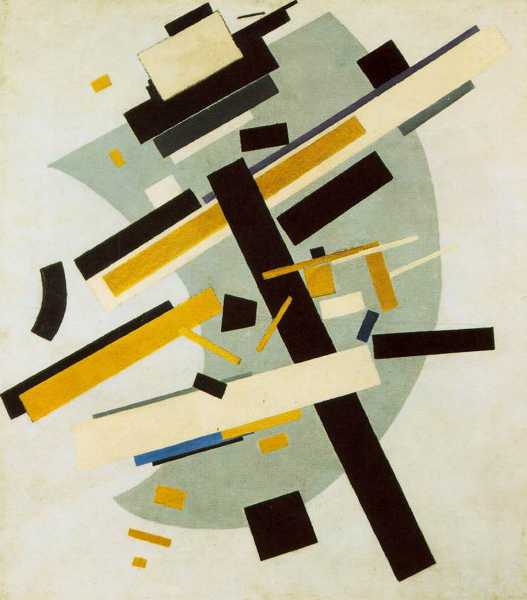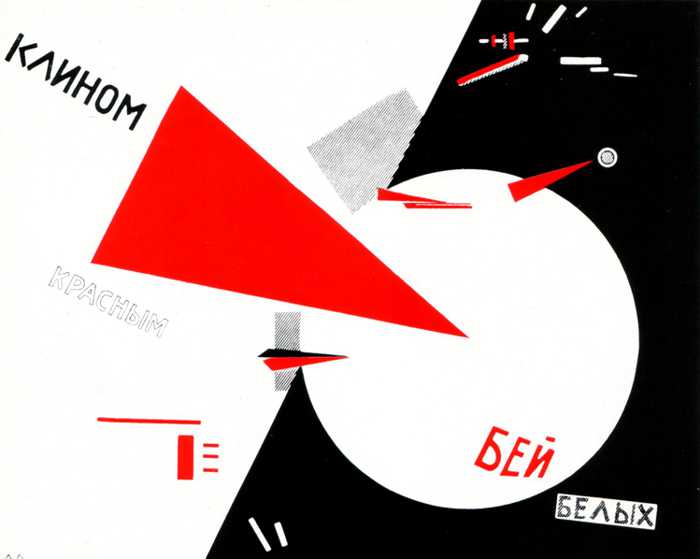Cubism was invented around 1907 in Paris by Pablo Picasso and Georges Braque. It was the first abstract style of modern art. Cubist paintings ignore the traditions of perspective drawing and show you many views of a subject at one time. The Cubists believed that the traditions of Western art had become exhausted and to revitalize their work, they drew on the expressive energy of art from other cultures, particularly African art. There are two distinct phases of the Cubist style: Analytical Cubism (pre 1912) and Synthetic Cubism (post 1912).
Futurism was a revolutionary Italian movement that celebrated modernity. The Futurist vision was outlined in a series of manifestos that attacked the long tradition of Italian art in favor of a new avant-garde. They glorified industrialization, technology, and transport along with the speed, noise and energy of urban life.
Suprematism was developed in 1915 by the Russian artist Kazimir Malevich. It was a geometric style of abstract painting derived from elements of Cubism and Futurism. Malevich rejected any use of representational images, believing that the non-representational forms of pure abstraction had a greater spiritual power and an ability to open the mind to ‘the supremacy of pure feeling’.
Constructivism used the same geometric language as Suprematism but abandoned its mystical vision in favour of their 'Socialism of vision' - a Utopian glimpse of a mechanized modernity according to the ideals of the October Revolution. However, this was not an art that was easily understood by the proletariat and it was eventually repressed and replaced by Socialist Realism. Tatlin, Rodchenko, El Lissitzky and Naum Gabo were among the best artists associated with Constructivism.
De Stijl was a Dutch 'style' of pure abstraction developed by Piet Mondrian, Theo Van Doesburg and Bart van der Leck. Mondrian was the outstanding artist of the group. He was a deeply spiritual man who intended on developing a universal visual language that was free from any hint of the nationalism that led to the Great War.
Mondrian gradually refined the elements of his art to a grid of lines and primary colors which he configured in a series of compositions that explored his universal principles of harmony. He saw the elements of line and color as possessing counteracting cosmic forces.
Well-known art works includes:
Ambroise Vollard

The Rhythm of the Violinist'

Suprematism


Composition with White and Yellow

No comments:
Post a Comment